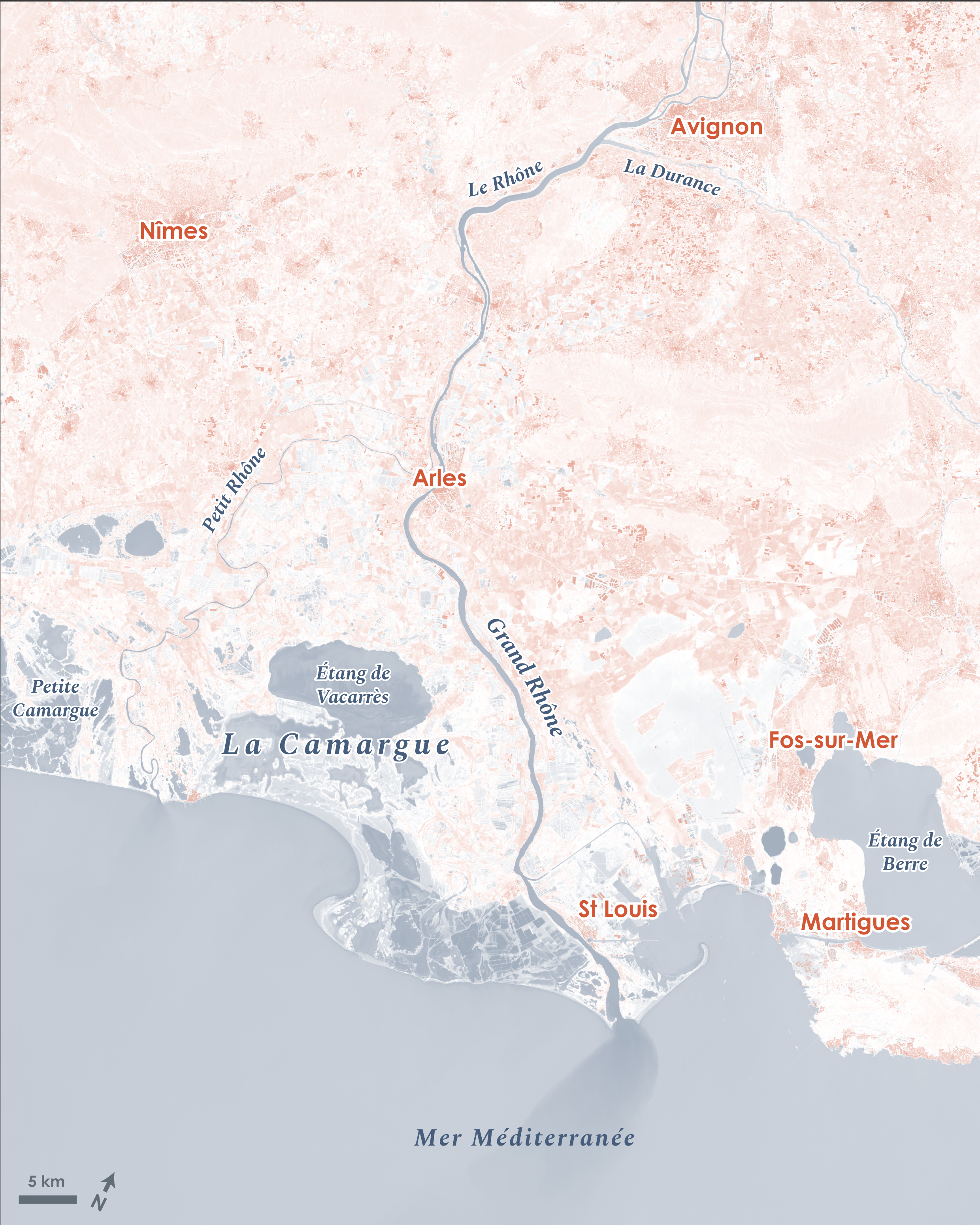THE RHÔNE
Shorter than the Loire – the longest river in France – but much more powerful, the Rhône river-tree stands out for its flow, its strength and its stature. Like a straight column in the landscape, it evokes the classical architecture born on the shores of the Mediterranean. It is a river-tree, of course, but also a river-civilisation: an axis of trade and influence, a passageway from the Mediterranean to the north. Its banks have seen the Greek and then Roman presence take root, forming one of the historical foundations of France.
It is a vertical and confident tree, anchored in the mountains. Its summit rubs shoulders with ice: Alpine torrents from the Rhône glacier and the Aletsch glacier, the largest in Europe. These glaciers, under climatic pressure, give off too much water, too soon. The tree is well watered, perhaps too well.
In spring, the waters rush into the mineral bed of the high valleys, flowing down to the great Alpine lakes—Lake Geneva, Lake Annecy, Lake Bourget—vast reservoirs of water and glacial memory. These are the nourishing nodes of the Rhône, the place where it thickens and gains consistency.
Then comes the plain, but without any loss of power. Too vigorous to be left free, the river is tamed by 19 dams. In a century, 80% of its course has been artificialised. The Rhône valley produces a quarter of France's electricity. The Loire was a river of castles, the Rhône a river of factories: mills, manufacturing plants, chemical complexes and nuclear power stations have flourished on its banks — a river of industrial and chemical revolution.
At Arles, at the height of its power, the Rhône divides in two, spreads out and calms down. It then reaches its delta: the Camargue, a wet, marshy area at the crossroads of the wild and the industrial. Here, flamingos, rice fields, salt works, mosquitoes and refineries coexist. The river dies there, magnificently, joining the Mediterranean Sea to perhaps be reborn elsewhere, in another form.
A pivotal river, the Rhône connects the irreconcilable: high-altitude glaciers, mountain villages, misty plains, sunny vineyards and the Mediterranean delta. It carves a furrow, in the agricultural sense of the term: a long, regular incision, a promise of fertility. The river is a promise. Like epiphytic organisms, we have grown on its trunk, living thanks to it, without necessarily feeding it in return.
What tree could embody such a river? The black poplar (Populus Nigra) : a straight, fast-growing, adaptable tree that loves damp banks, useful and familiar. Poplar wood for tools, frames, everyday objects — like the Rhône, it has accompanied our development. Co-evolutionary. Symbiotic? Not always. For if we take so much, what do we give back? In any case, it is a robust, industrious tree-river, shaped by and for humans, a pillar of water and history.



